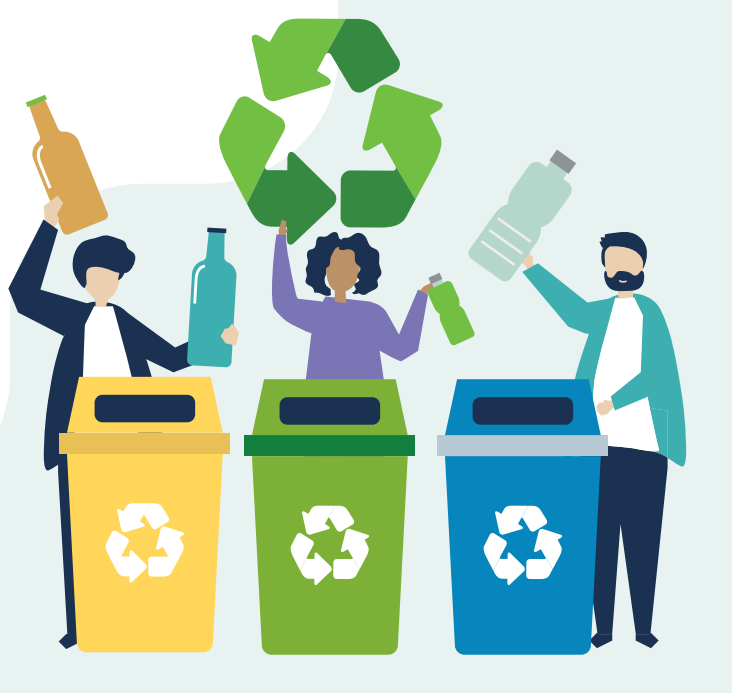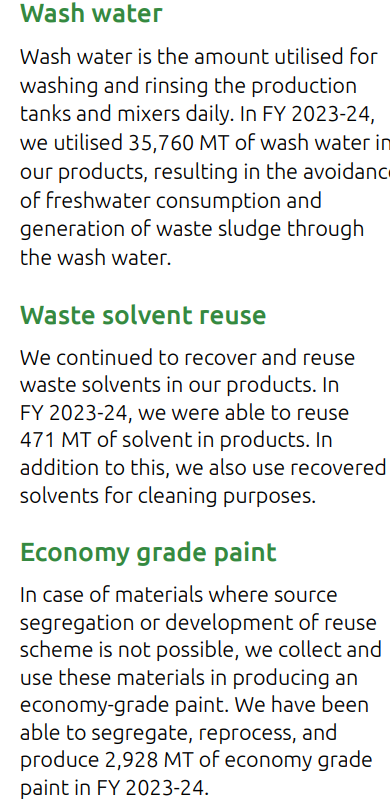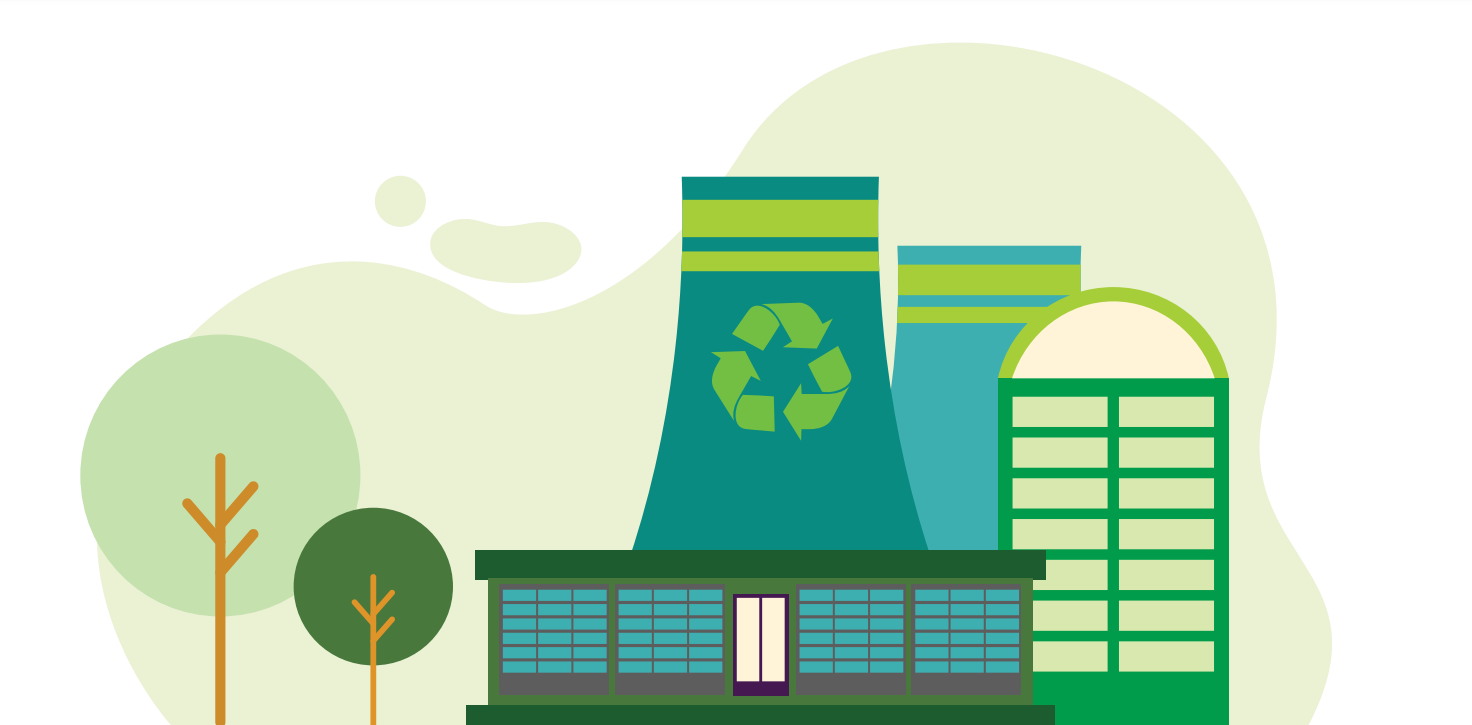

At Asian Paints, Nature Positive embodies our holistic approach to sustainability. It carefully evaluates the environmental footprint of our operations to generate positive outcomes for both our Company and the planet. The theme covers our endeavours in waste reduction, air emissions management, and biodiversity conservation.


# 20% in GS-11 products, 15% in other plastic packaging

Waste Management
Our waste management is based on the systematic tracking of our material flows, audits to identify opportunities, and adheres
to a well-defined hierarchy. The reduction initiatives involve adoption of innovative technologies for reduction as well as R&D
towards meticulously curated reuse schemes. These initiatives are further supported by appropriate trainings to employees on
reduction as well as safe handling of wastes. We aim to avoid waste to the best of our ability by continuously optimising our
processes or developing new production methods. If the avoidance is not possible, we assess whether they can be recycled
or reused within our operations. For instance, wash water is used in our process, recover and reuse waste solvents, and
manufacture economy-grade paint. With stringent processes, we ensure the safe, proper, and environmentally responsible
disposal of materials that cannot be recycled and reused.
At our paint manufacturing unit, specific hazardous waste disposal (Kg/KL) has seen a consistent year-on-year reduction since
the baseline year of 2013-14. Specific Hazardous Waste Disposal saw a 21% decrease from last year and a 77% decrease from
FY 2013-14.


During the year, at our decorative paint manufacturing units, 787 MT of hazardous waste and 9,759 MT of non-hazardous waste were disposed of from our units. At the standalone level, 1,363 MT of hazardous waste and 12,317 MT of non-hazardous waste were sent for disposal.


Wastewater management
Industrial effluent is generated during
paint processing and then during
equipment and pipeline cleaning. Our
wastewater management strategy has
two important components:

Recognising the criticality of water as a shared resource, we developed
a comprehensive strategy focussed on water conservation, reuse and
recycling. We identified and implemented cutting-edge wastewater
treatment technologies to promote the recycling of wastewater and
eliminate the impact of discharge on local ecosystems, achieving Zero
Liquid Discharge (ZLD).
The solution consists of advanced systems such as high-recovery
Reverse Osmosis plants, followed by efficient evaporation techniques.
The permeate from the RO plant is recycled and used for process
requirements, while the reject passes through the evaporation
system. The reliance on such systems has helped our manufacturing
sites achieve ZLD, and highlights our dedication to sustainability and
environmental stewardship.

Recycled plastic:
We increased the use of recycled plastic in a host of our product packaging.
The total quantity of recycled plastic used in our packaging was 10,324 tonnes
in FY 2023-24. This accounts for 14.6% of total plastic packaging.
Waste to value: Plastic Waste Management (PWM):
We have been ensuring the collection and safe disposal
of our packaging waste through the Extended Producer
Responsibility (EPR) approach since 2018. Under plastic
EPR, we have collected over 7,200 MT of flexible and
MLP plastics and over 70,000 MT of rigid plastic, which
represents 100% of our liability in respective categories.
The collection and responsible channelisation were
ensured across 25 states. Nearly 95% of the total
plastic collected was channelised for recycling while the
remaining was co-processed.






Other emissions
We have made the transition to cleaner fuels, replaced
diesel-based DG sets with gas-based ones, and
reduced boiler usage by employing community steam
boilers and heat recovery units. In our decorative paint
units, absolute SOx, NOx and PM emissions were
2.8 MT, 7.7 MT and 5.3 MT, respectively. At standalone
levels, absolute SOx, NOx and PM emissions were
13.1 MT, 44.4 MT and 14.0 MT respectively.

